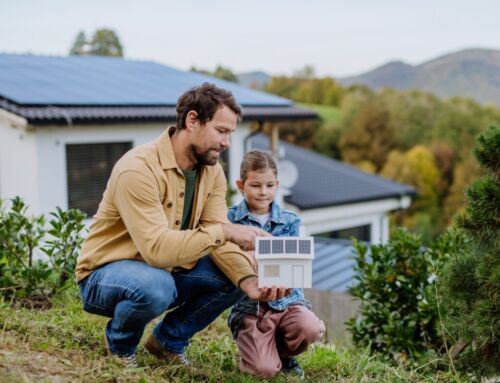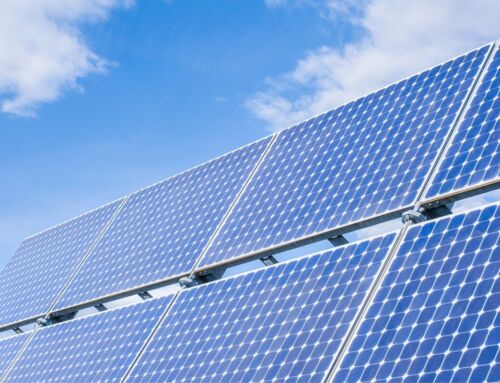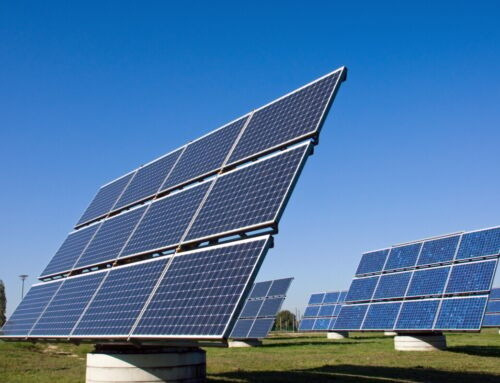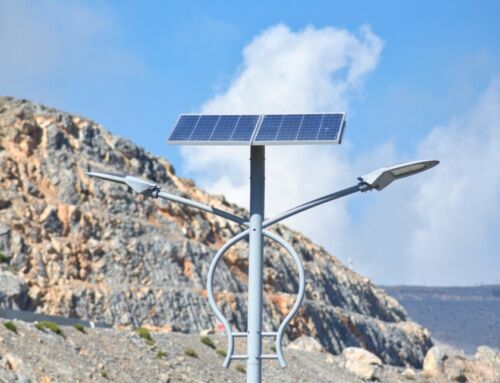What is Needed for Solar Power Setup?
Are you ready to harness the power of the sun and transform your energy consumption? The journey to solar power can seem daunting, but understanding what is needed for solar power is simpler than you might think. The promise of clean, renewable energy is within reach, and this guide will illuminate the essential components required for a complete solar power setup, ensuring you’re well-equipped to make informed decisions.
Key Components of a Solar Power System
To effectively capture and utilize solar energy, several critical components must work in harmony:
- Solar Panels: These are the heart of your solar power system, converting sunlight into electricity. Choosing the right type and number of panels is crucial for meeting your energy needs.
- Inverter: This device converts the direct current (DC) generated by your solar panels into alternating current (AC), which powers your home.
- Battery Storage: While optional, batteries store excess energy for use during cloudy days or at night, enhancing your system’s reliability.
- Mounting and Racking System: Securely holds your solar panels in place, ensuring optimal sun exposure.
- Monitoring System: Keeps track of your energy production and consumption, helping you optimize efficiency. By understanding these components, you can confidently embark on your solar journey, knowing exactly what is needed for solar power to work effectively in your home.
How to Choose the Right Solar Panels for Your Home
Are you ready to harness the power of the sun and transform your home into an energy-efficient haven? With the right solar power setup, you can significantly reduce your electricity bills and your carbon footprint. However, understanding what is needed for solar power can be daunting. Fear not! We’re here to guide you through the process of selecting the perfect solar panels for your home, ensuring you make an informed decision that meets your energy needs and budget. When choosing solar panels, several factors come into play.
- Efficiency and Output: Consider the efficiency of the panels, which determines how much sunlight is converted into usable electricity. Higher efficiency panels might cost more but can generate more power in limited space.
- Durability and Warranty: Look for panels with robust warranties and proven durability to withstand harsh weather conditions, ensuring long-term reliability.
- Cost and Incentives: Evaluate the cost of the panels and explore available incentives or rebates that can offset initial expenses. By balancing these aspects, you can find the right panels that align with your energy goals and financial plans. Transitioning to solar power is a significant step, but with the right information, you can confidently choose the best solar panels for your home.
Inverters and Batteries: The Heart of Your Solar Power System
When considering what is needed for solar power, inverters and batteries are crucial components that often take center stage. Imagine setting up a solar power system without these vital elements; it would be like having a car without an engine. The problem many face is understanding how these components work together to convert and store energy efficiently. But fear not, as we delve into the heart of your solar power system, you’ll discover how inverters and batteries seamlessly integrate to power your home sustainably.
Inverters: Converting Energy Efficiently Inverters play a pivotal role in your solar power setup by converting the direct current (DC) generated by solar panels into alternating current (AC), which is used by most household appliances. Without an inverter, the energy harnessed from the sun would be unusable for daily needs. Modern inverters come with smart features that optimize energy conversion, ensuring minimal loss and maximum efficiency. They also provide monitoring capabilities, allowing you to track your energy production and consumption in real-time, making them indispensable in a complete solar power setup.
Read More: Essential Solar Installation Parts You Need to Know!
Batteries: Storing Energy for Later Use Batteries are the backbone of any solar power system, providing the ability to store excess energy for use when the sun isn’t shining. This storage capability is essential for maintaining a consistent power supply, especially during nighttime or cloudy days. With advancements in battery technology, today’s solar batteries offer longer life spans, faster charging, and greater storage capacity, ensuring your home remains powered even when solar production is low. Investing in high-quality batteries is a wise decision for anyone serious about achieving energy independence with solar power.
Exploring Mounting Systems: Secure and Efficient Solar Installations
In the quest for sustainable energy solutions, solar power stands out as a beacon of hope. However, understanding what is needed for solar power can be daunting. From panels to inverters, each component plays a crucial role in harnessing the sun’s energy efficiently. One often overlooked yet vital element is the mounting system, which ensures your solar panels are securely and optimally positioned. Let’s delve into the world of mounting systems to see how they contribute to a complete solar power setup.
Choosing the right mounting system is pivotal for maximizing the efficiency of your solar panels. These systems not only secure the panels but also optimize their angle and orientation to capture the most sunlight. There are several types of mounting systems available, each catering to different installation needs and environments. Understanding these options helps in deciding what is needed for solar power in your specific context.

Ready to take the next step? Discover how solar energy can elevate your home and reduce those energy bills. Request a Free Solar Estimate at NEW SOLAR QUOTE
Types of Mounting Systems
- Roof Mounts: Ideal for residential installations, these mounts attach directly to your roof, making them a space-efficient option.
- Ground Mounts: Perfect for properties with ample land, these allow for easy maintenance and optimal positioning.
- Pole Mounts: Suitable for uneven terrain, offering flexibility in panel orientation. Each type has its own set of benefits, and selecting the right one depends on your specific site conditions and energy goals. By ensuring your solar panels are securely mounted, you not only protect your investment but also enhance the overall efficiency of your solar power system.
Maximizing Efficiency: Tips for Optimal Solar Power Performance
In the quest for sustainable energy solutions, solar power stands out as a beacon of hope. But what is needed for solar power to truly shine? Many homeowners face the challenge of not only installing solar panels but also ensuring they operate at peak efficiency. The promise of solar energy is immense, but maximizing its potential requires a strategic approach. Let’s explore how you can optimize your solar power setup for maximum efficiency.
Understand Your Energy Needs
To begin with, understanding your energy consumption is crucial. Assess your household’s energy usage patterns to determine the size and capacity of the solar power system you need. This involves evaluating your daily and seasonal energy needs, which will guide you in selecting the right number of panels and battery storage capacity. By aligning your system with your actual energy requirements, you can avoid over- or under-sizing, which can lead to inefficiencies.
Optimize Panel Placement
The placement of your solar panels plays a significant role in their performance.
Ensure that your panels are installed in a location that receives maximum sunlight throughout the day. This typically means a south-facing roof with minimal shading from trees or other structures. Additionally, consider the angle of installation; panels should be tilted to capture the most sunlight based on your geographical location. By optimizing placement, you can significantly enhance the energy output of your solar power system.
What is Needed for Solar Power Maintenance and Troubleshooting
When it comes to setting up a solar power system, the excitement of harnessing clean energy is undeniable. However, many people overlook the crucial aspect of maintenance and troubleshooting. Without proper upkeep, even the most advanced solar setups can underperform. But don’t worry—understanding what is needed for solar power maintenance can ensure your system runs smoothly and efficiently.
Regular Maintenance Tasks
To keep your solar power system in top shape, regular maintenance is essential. This includes cleaning the solar panels to remove dust and debris that can block sunlight. Additionally, checking for any physical damage or loose connections in the wiring can prevent potential issues. Regularly monitoring the inverter’s performance is also crucial, as it converts the solar energy into usable electricity.
Troubleshooting Common
Issues Despite regular maintenance, issues can still arise. Knowing what is needed for solar power troubleshooting can save you time and money. Common problems include unexpected drops in energy production, which could be due to shading or inverter malfunctions. By using a solar monitoring system, you can quickly identify and address these issues, ensuring your solar power setup remains efficient and reliable.
How NewSolarQuote Can Help You Build Your Ideal Solar Power Setup
Are you ready to harness the power of the sun and reduce your carbon footprint? Transitioning to solar energy is a smart move, but understanding what is needed for solar power can be overwhelming. At NewSolarQuote, we simplify this process by providing everything you need for a complete solar power setup, tailored to your specific needs. Our comprehensive approach ensures that you have all the components necessary for a seamless transition to solar energy, from panels to inverters and beyond.
Key Components of a Solar Power Setup
- Solar Panels: The heart of your solar power system, converting sunlight into electricity.
- Inverters: Essential for converting the DC electricity generated by your panels into AC electricity for home use.
- Mounting Systems: Securely attach your panels to your roof or ground setup.
- Battery Storage: Store excess energy for use when the sun isn’t shining. NewSolarQuote not only provides these essential components but also offers expert guidance to ensure your solar power setup is optimized for efficiency and cost-effectiveness. Our team is dedicated to helping you navigate the complexities of solar technology, ensuring you have a reliable and sustainable energy solution. With our support, you’ll enjoy the benefits of solar power without the hassle.
Take action today! Save money and protect the planet by going solar. Schedule your no-cost consultation now. Book Your Free Consultation at NEW SOLAR QUOTE
Want to see all your options? Head to FREE SOLAR QUOTES for a closer look at our solar offers.





